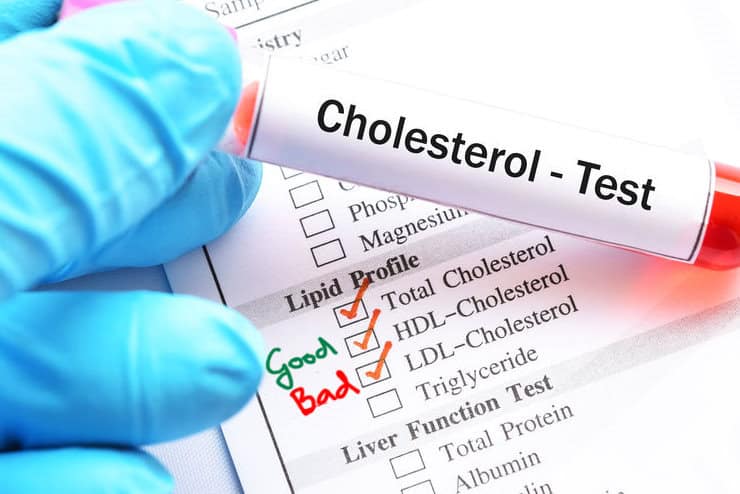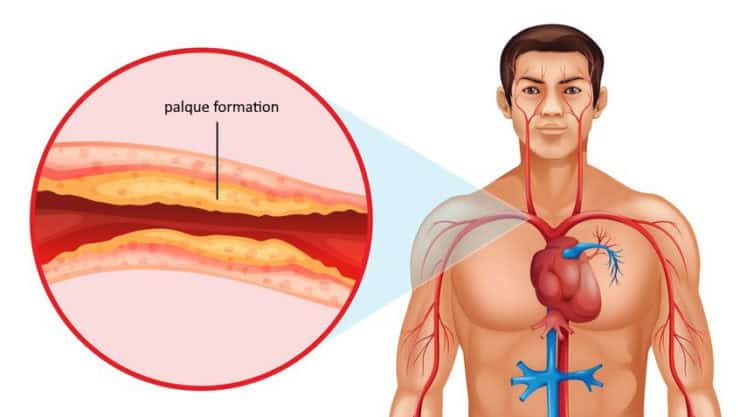You may have heard that the disease atherosclerosis, which is among the leading causes of death in the western world, is a consequence of high cholesterol. And not just any to them: specifically, bad cholesterol.

But what does this actually mean? What are good and bad cholesterol, and how do they differ? Let’s find out!
Too long; didn’t read:
Bad cholesterol is a component of low-density lipoprotein (LDL) and is carried by it from the liver to cells. LDL can build up in the artery walls as plaque, obstructing the flow of blood. Parts of the plaque can tear off and clog smaller arteries completely.
Good cholesterol is a component of high-density lipoprotein (HDL) and is carried by it from cells to the liver for excretion, thus effectively reducing the amount in the bloodstream.
Because both good and bad cholesterol with their associated lipoprotein have anti-inflammatory properties, arterial micro-injuries can cause crowding of lipoproteins and make the formation of plaque more likely. Bad cholesterol is larger and forms plaques more readily than good cholesterol.
What is cholesterol, and what does it do?
What is cholesterol, and what does it do? I won’t assume any prior biochemistry knowledge. So I won’t tell you that cholesterol is a sterol lipid. But I can mention that it is a fat-like substance.
What does cholesterol do? It has vital functions in the human body. It is a constituent of cell membranes and a substance from which the body makes bile salts, vitamin D, and hormones such as progesterone and testosterone.
Without cholesterol, the human body would be unable to function. So it is good! Wait, but why is it bad then?
What is the difference between good cholesterol and bad cholesterol?
Cholesterol in itself is neither good nor bad. (And I don’t mean in the sense that because a chemical molecule is not sentient, it can’t be bad.) The devil is in the details, or, in this case, in how the cholesterol is transported.
Cholesterol is a fat; like other fats, it does not dissolve in fluid, including blood, which makes transportation a challenge. The solution comes in the form of lipoproteins — tiny balls of fat and protein mixed together that transport cholesterol.
Lipoproteins carry cholesterol in all kinds of directions, but two of the best-known lipoproteins travel on the main highways:
- Low-density lipoproteins transport cholesterol from the liver to cells. This is what we call bad cholesterol.
- High-density lipoproteins are smaller and transport cholesterol to the liver for excretion. This is what we call good cholesterol.
Why one of them is bad
So why do we call these lipoproteins good and bad? There is no complete answer to this, but the main reason is that high levels of bad cholesterol are associated with an increased risk of atherosclerosis.
Cholesterol is bad only when there is too much of it. As with many good things, like coffee or red wine, moderation is a virtue. They’re good, but enough is enough.
The problem with cholesterol, or, to be more precise, with the lipoproteins that transport them, is that they can accumulate in arterial walls as plaque and form obstructions.

Bad (low-density) cholesterol is larger and forms plaque more readily than good (high-density) cholesterol. You can think of the higher-density form as being more tightly packed, thus smaller.
A plaque does not consist purely of cholesterol or lipoproteins. It primarily consists of lipoproteins combined with minerals, waste products, platelets, and clotting agents. That plaques can obstruct blood flow is one problem (LINK?). But an even more critical problem is that parts of the plaque can tear off and get carried away in the bloodstream. Soon the fragment may enter a much smaller artery and clog it, causing a heart attack or ischemic stroke, depending on where the clogging happens. Bad news in any case.
Can we do something about bad cholesterol?
So high levels of low-density lipoproteins are bad. Can we do something about it?
If there are no medical contraindications, moderate exercise can help raise the level of good cholesterol. The emphasis here is on the word “moderate.” You should ask your doctor for advice if you are undergoing treatment for a medical condition. If you are at least moderately healthy, moderate exercise can’t really hurt you.
Exercise will also help you to lose weight, which reduces the amount of bad cholesterol in the circulation. Exercise also reduces your risk of heart disease and has many other health benefits. Our bodies require exercise. Exercised bones, muscle, fat, and other tissue release hormones that the body needs in order to function normally. Without exercise, these are deficient.
However, if a person is obese, weight loss should be gradual and supervised by a healthcare professional.
Speaking of weight, cutting down on fats in one’s diet is also a good idea. Not to say that fats should be avoided entirely. Our body needs fat just as badly as it needs carbohydrates and proteins. But most people in the westernized world (including me) do not have the problem of too little fat in the diet. I could use a little less. So, unless you’re an exception, eating less fat is a good idea.
Your body regulates cholesterol for you
At the same time, having less fat in your diet does not necessarily reduce your level of bad cholesterol. The reason is that your body also makes it and measures the amount of it. As soon as your cholesterol level drops, your body may decide to start producing more of it. This increased production will partially compensate for the reduction of cholesterol in your diet.
The overall level of cholesterol will still fall — but not by the amount you might wish.
In any case, if anything is wrong with your cholesterol levels, you should always consult a healthcare professional. Effective treatments are available, and more will become available in the near future. High cholesterol should be addressed by your doctor, not by a website. My only purpose here has been to explain the difference between good cholesterol and bad cholesterol.